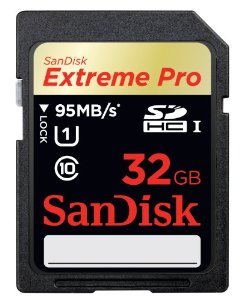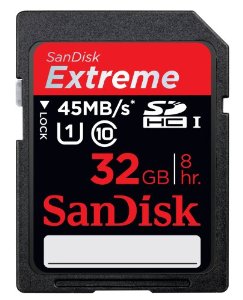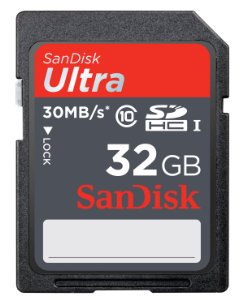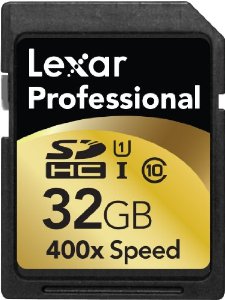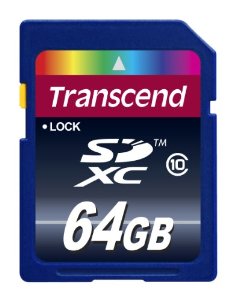- Forum
- Photography and Camera Forum
- Equipment Research, Buying and Using
- Computers
- Memory Card Buying Guide: Know what do you look for BEFORE buying!
Memory Card Buying Guide: Know what do you look for BEFORE buying!
-
 Topic Author
Topic Author
- PhotographyTalk
- Master of the Lens
- Followers: 270
- Posts: 1638
-
Points:
484
Post #274113
• The level of your DSLR.
• What kind of photography you like to shoot.
• The conditions under which you shoot.
• How many images you capture during a session.
• Whether they are RAW or JPEG.
• The speed of your camera’s continuous burst mode and whether you use it at its fastest speed.
• How quickly you want images to be read for transfer to your computer and write speed for continuous burst mode, HD video and 3D video.
1. SanDisk Extreme Pro Memory Cards
Since I shoot with the Nikon D800, I rely on SanDisk memory cards , especially the Extreme Pro cards because they read as fast as 95MB per second and write at 90MB per second. They are also rated at UHS Speed Class 1 and Class 10 for Full HD and 3D video. Of course, factors, such as your camera model, file size, resolution, compression, bit rate, content, etc., will affect how well the SanDisk Extreme Pro memory cards support video.
Landscapes are probably my favorite photographic genre, so the Extreme Pro cards are also my choice because they’re engineered and built for extreme weather and other unknown conditions that you and I might face. For example, the SanDisk Extreme Pro cards are waterproof. They can be immersed in salt or fresh water for as much as 72 hours and to a depth of a bit more than 3 feet (1 meter). They can also withstand as much as 500Gs of shock and are vibration proof. Of extreme importance to photographers that travel often is that these cards are magnet proof and X-ray proof, protecting them from the scans of security machines at airports.
Another important reason I shoot with the SanDisk Extreme Pro Memory Cards is that one weekend I may be shooting in the hotter temperatures of the Pacific coast or inland desert, and then the next weekend shooting landscapes in the cold mountains. These cards are rated for -13 to 185 degrees Fahrenheit, so I know temperature will never be an obstacle.
The SanDisk Extreme Pro Memory Cards come in 8GB, 16GB , 32GB and 64GB capacities .
2. SanDisk Extreme Memory Cards
The only real difference between the SanDisk Extreme Pro and Extreme is the read/write rates. The Extremes have a 45MB rate. In addition, they are also available in more sizes: 4GB, 8GB, 16 GB, 32GB, 64GB and 128GB. Either card or size will work fine for any professional or serious amateur shooting with a pro-level DSLR.
3. SanDisk Ultra Memory Cards
SanDisk’s Ultra brand of memory cards is generally suited for mid-level DSLRs. If you are shooting with an entry-level camera, you may prefer the Ultra’s read/write rates to the company’s Standard line of cards that also work in entry-level DSLRs.
4. Lexar Memory Cards
Lexar is a brand that seems to receive good reviews and positive customer feedback. The Lexar Professional Class 10 UHS-1 card is available as an SDHC or SDXC type. The 600x is the equivalent of 90MB/second read transfer speed while the 400x is 60MB/second. Both are available at 64GB, 128GB and a whopping 256GB. The mid-level line of Lexar memory cards is known as Platinum II, with a slower, but still effective 200x speed, or 30MB/second. These are better for low-end DSLRs. The SDHC version is comes in 8GB, 16GB and 32GB. The SDXC Platinum II is only available with 64GB capacity.
5. Transcend Memory Cards
These are definitely budget-priced cards with slower transfer rates (20GB/18GB/second) than SanDisks or Lexars, but there is a wide range of capacities, from 8GB to 128GB. Enthusiasts and hobbyists shooting with equally budget-friendly DSLRs will find these cards do a good job. Professionals and serious amateurs with higher-grade DSLRs would probably find them too slow, especially if they shoot plenty of RAW files.
When choosing a memory card for your DSLR, remember to check your camera manual or with the manufacturer as to what card it recommends. Ultimately, the best card is the one that matches your camera. Many photographers have discovered they bought an incompatible card simply because they didn’t spend a few minutes doing some research. You’ll spend much more time fuming and cussing, calling the company’s tech support, repackaging the wrong card and returning it.
Recommended Reading:
- Best Business Practices for Photographers
- The Fast Track Photographer Business Plan: Build a Successful Photography Venture from the Ground Up
- Get Your Photography on the Web: The Fastest, Easiest Way to Show and Sell Your Work
- Selling Your Photography: How to Make Money in New and Traditional Markets
- Licensing Photography
- Starting Your Career as a Freelance Photographer
- Photographer's Survival Manual: A Legal Guide for Artists in the Digital Age
- Legal Handbook for Photographers: The Rights and Liabilities of Making Images
- Business and Legal Forms for Photographers
-

- Julie Staas
- Lone Wolf
-
- Nikon D300
- Followers: 44
- Posts: 236
-
Points:
889
Post #274362
Country Girl out for a stroll
-

- ubix22
- Newbie
- Follower: 1
- Posts: 1
-
Points:
10
Post #280322
-
 Pt+
Pt+ - Pilotshark
- Photography Hooked
-
- Samsung Galaxy S 10+ and camera on my Mavic Air 2 drone.
- Followers: 84
- Posts: 962
-
Points:
17940
Post #708171
Sandisk is the way to go No Muss or Fuss just put it in and shoot.
So after so many years of doing this or that and life itself getting in my way, I am now at the point where just slowing down and doing things I have put off I have concluded that its time to become creative and do what I want.
Thanks for giving me a place to get started.
-

- Piechura
- Newbie
- Followers: 7
-
Points:
5583
-

- Screamin Scott
- Moderator
-
- Nikon D610, Nikon D7100, Nikon D300, Olympus OMD E-M5 MarkII, Olympus OM-D E-M10, Olympus Pen E-P3 + film SLR's
- Followers: 1384
- Posts: 6854
-
Points:
39948
Post #708181
- Forum
- Photography and Camera Forum
- Equipment Research, Buying and Using
- Computers
- Memory Card Buying Guide: Know what do you look for BEFORE buying!
Latest Reviews
Nikon’s retro-looking Nikon Zfc is anything but retro. Under its classic body is a host of features and amenities that make it a worthwhile compact mirrorless camera for 2024.
The Canon EOS R50 is one of the newest R-system cameras from Canon. Is it worth your money? Find out all the details you need to know in this comprehensive review.
The Sony FE 70-200mm f/2.8 GM OSS II is Sony’s flagship mirrorless zoom lens. As such, it’s loaded with features and has a top-shelf build quality that makes it a top pick!
The Leica SL2-S is an attractive, premium mirrorless camera with photo and video specs that are sure to impress. And with the legendary Leica name, you know this camera exudes quality!
Latest Articles
Blue hour photography might not be as well known as golden hour photography, but it is every bit as good a time to create epic images of landscapes. Learn how in this quick tutorial!
Nikon’s retro-looking Nikon Zfc is anything but retro. Under its classic body is a host of features and amenities that make it a worthwhile compact mirrorless camera for 2024.
Moving from taking snapshots of your dog to creating beautiful images doesn’t have to be that difficult! Use the tips outlined in this dog photography guide, and you’ll get better results in no time.
Acrylic print photos are a beautiful way to display your favorite images. But they don’t come without some questions. Get all the answers you need about this medium in this guide!
Where do you get your landscape photography inspiration? Is it from masters like Ansel Adams? Or perhaps viewing art from other genres? We’ve got these and a few other sources for you to check out!
The Canon EOS R50 is one of the newest R-system cameras from Canon. Is it worth your money? Find out all the details you need to know in this comprehensive review.
Too often, affordable online printing companies don’t meet your expectations of what a print should look like. But there are some choices that combine affordability with superb quality!
Self-critique is an important component of your journey to improving as a photographer. Use these simple tips about critiquing your work as a means to make faster progress with your art.







